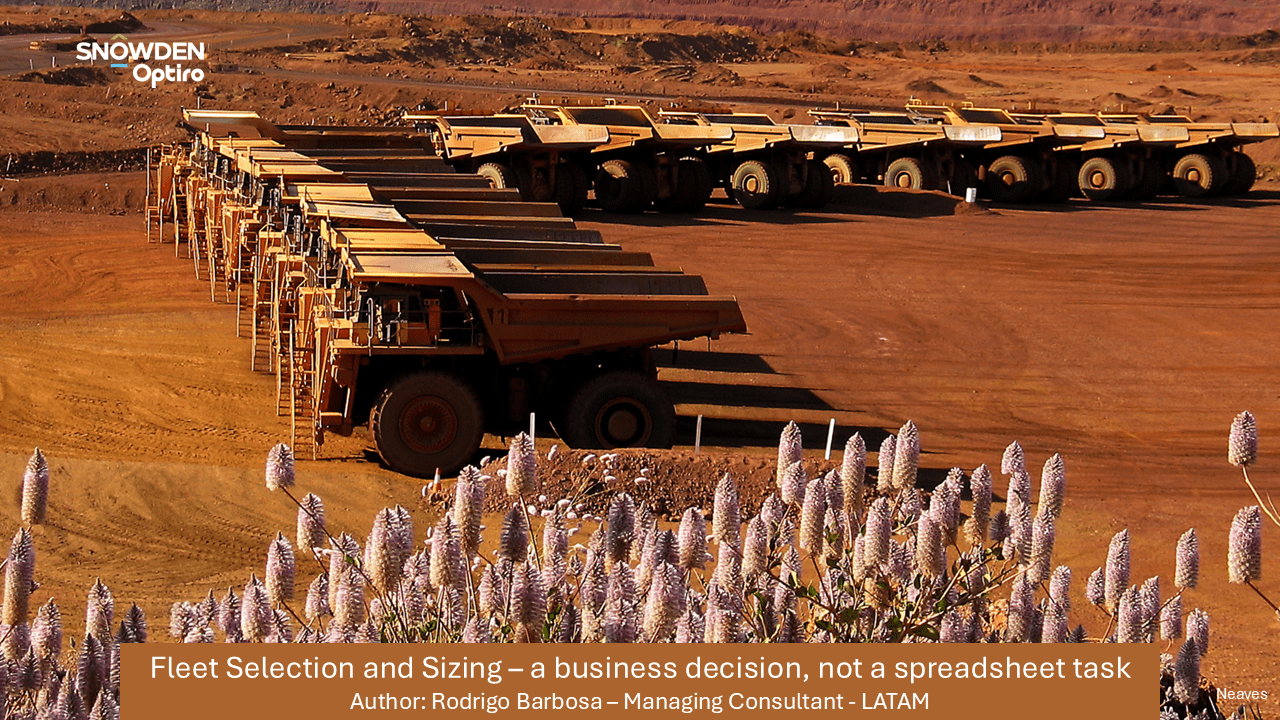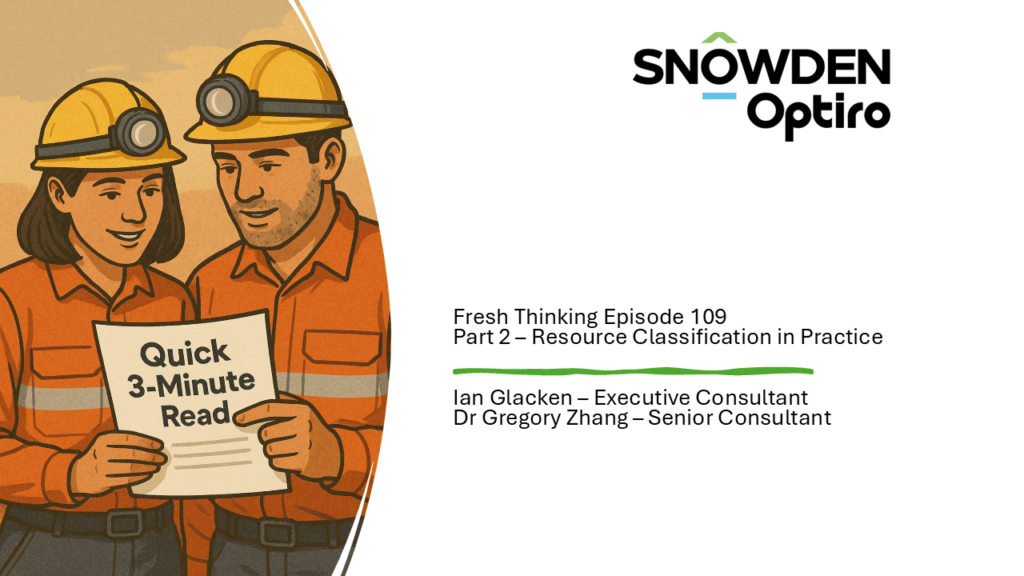


Here’s your 3-minute quick read of Fresh Thinking by Snowden Optiro’s podcast Episode 109.
We’ve pulled out the key insights and takeaways—perfect for when you want the value, minus the headphones.
From confidence intervals to scorecards—navigating the tools of classification with Ian Glacken.
In Part 2 of our Fresh Thinking podcast series on mineral resource classification, our Senior Consultant Dr Gregory Zhang and Executive Consultant Ian Glacken discuss how the industry approaches the complex task of categorising resources.
This episode zeroes in on two practical tools: the 90/15 approach and the scorecard method – offering insights into their application, benefits, and common misconceptions.
Originating from the work of Harry Parker and Christina Dohm in the 1990s, the 90/15 approach incorporates:
This method moves beyond simple drill spacing by introducing a statistical framework that acknowledges uncertainty and production scale. Companies often adjust the threshold (e.g. 90/30) when defining inferred resources.
“It’s become almost a standard in the industry,” says Glacken. “Most major and junior miners in Perth use some form of it.”
Despite its value, the 90/15 approach is less common than it should be due to:
“Drill spacing is only the starting point,” Glacken emphasises. “Classification is broader and more nuanced.”
To bring structure to these nuances, many practitioners use scorecards—a formalised checklist of criteria like:
Each factor is assigned a score and a weight, creating a composite assessment. This method is especially helpful for large mining houses needing consistent, auditable frameworks across multiple sites.
“The scorecard doesn’t override the 90/15 outcome,” says Glacken. “It builds on it and often down-classifies based on qualitative input.”
In a recent project, the 90/15 approach was applied via simulation to a large porphyry copper deposit. While the mechanical output was optimistic – particularly for the indicated category – a CP’s expert judgment adjusted classifications downward due to limited drilling at depth. This blend of quantitative and qualitative insight illustrates the method’s real-world strength.
Resource classification isn’t just about spacing drills at the right intervals. From 90/15 to scorecards, the tools are there – applying them wisely means recognising their context, limitations, and the importance of expert judgment.
As Ian puts it:
“If you’re still relying solely on drill spacing, you’re missing the bigger picture.”
🎧 Listen to the full episode on Spotify, YouTube, or your preferred podcast platform.
🔗 Need support applying these methods in your projects? Contact the Snowden Optiro team: contact@snowdenoptiro.com
Want to hear or watch the full podcast?
Catch the full conversation on YouTube or the audio podcast on Spotify – and don’t forget to Subscribe for more Fresh Thinking.
If you would like to contact either Ian or Greg: contact@snowdenoptiro.com
Here is a LINK to our Snowden Optiro YouTube channel.
Snowden Optiro is a resources consulting and advisory group that provides independent advice, consulting and training to mining and exploration companies, their advisors and investors.
We help mine developers to advance their projects, mining companies to improve their operations and their professionals, and investors to de-risk their investments by the provision of quality advice, training and software in the field of Mineral Resources and Mineral/Ore Reserves.
Subscribe here for our podcasts, technical articles and news
